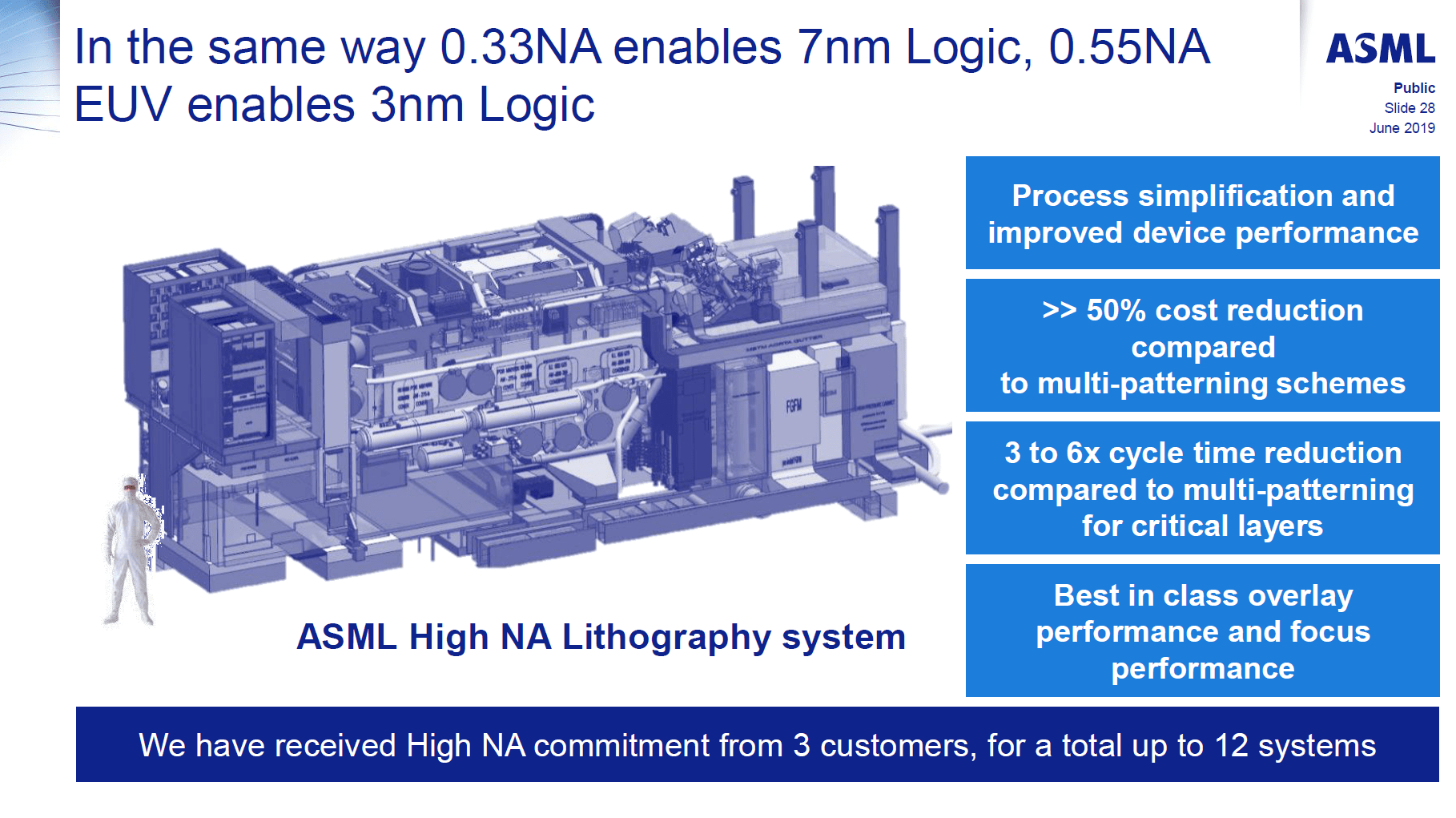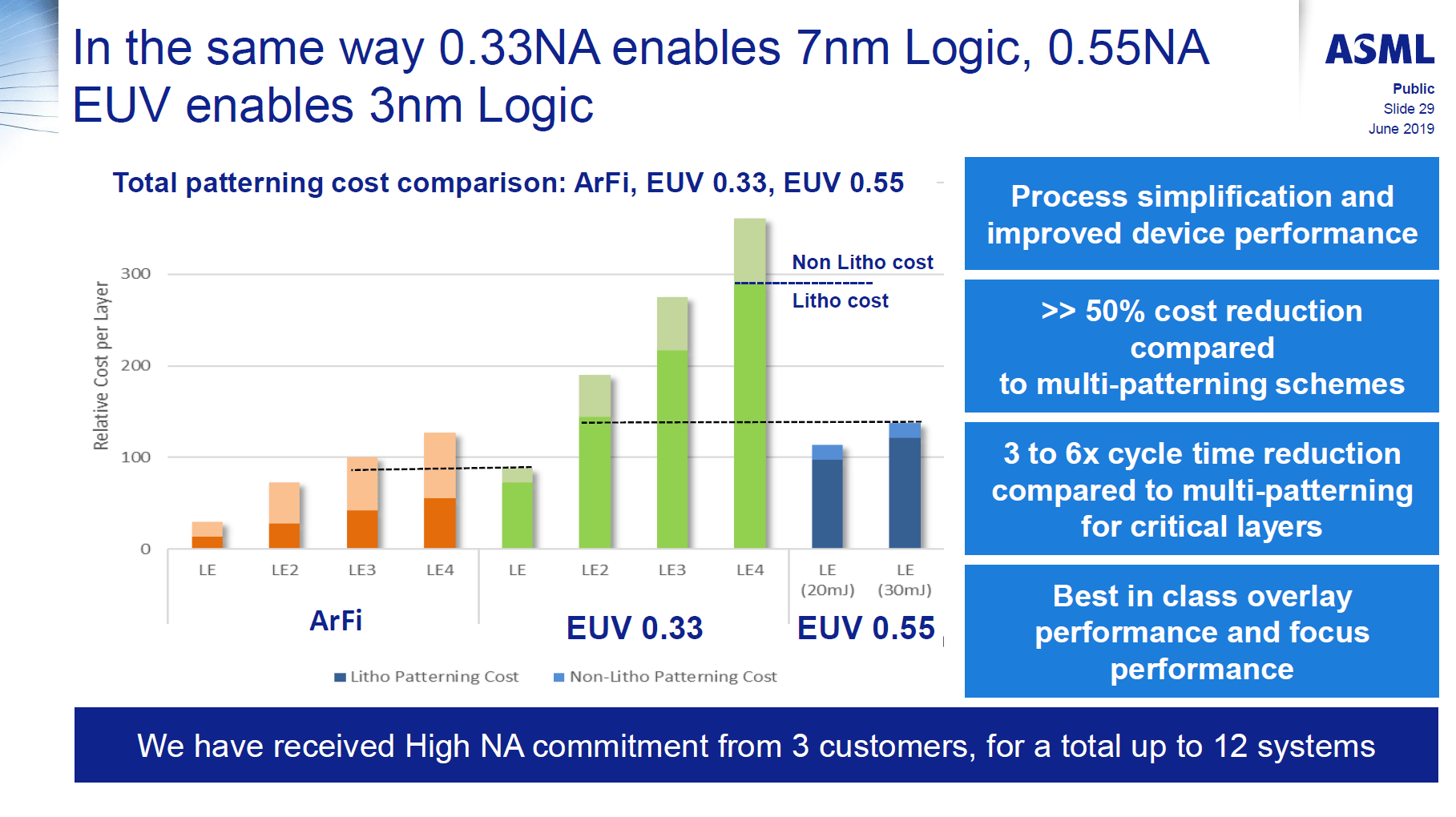Intel will be the first customer of the High-NA-EUV systems from ASML and will use Gate all Around (GAA) in chip production from 2025. The surprising announcement is a clear announcement: Intel wants to become the market leader in terms of chip production again, something that the manufacturer almost completely slept through with EUV.
EUV overslept, at high-NA-EUV on place 1
Saving money and taking the path of least resistance has been the motto at Intel in recent years, which also included EUV. Even the next CPU generation, Meteor Lake, from 7 nm production, officially called “Intel 4” since today, should do without EUV as much as possible and, above all, be inexpensive with classic lithography production. With this plan, Intel ultimately embarrassed itself almost completely and had to go very far back to the drawing board to realize that without EUV it simply won't work. Now Intel is advertising that Meteor Lake will expose many locations with EUV when the CPUs are available in 2023. But only in the next generation will the switch to EUV be pushed even further, which in turn makes it clear once again how late Intel is in this regard.
Leader instead of follower
This should not happen again in the distant future and Intel wants to prove it today by declaring: High-NA-EUV, the next generation of exposure systems from ASML, will be Intel's first customer. Intel wants to be a leader instead of a follower again.

Intel and ASML in the same schedule
High-NA (high numerical aperture) promises a similar gain as the jump from immersion to EUV lithography. Multi-patterning should be avoided as much as possible, because a high number of exposure steps always harbors sources of error and drives up costs. For structures that are becoming smaller, there comes a point at which it can hardly go any further – as Intel had to learn at 7 nm. In the end, ASML always mentioned 3 or 2 nm production as an entry into high NA. That fits in with the new Intel naming scheme that has been renamed today. Because Intel wants to manufacture chips with “Intel 18A” (based on 1.8 nm) for the first time from 2025, ASML is planning the first deliveries for this period.
-
 Significant cost reduction with next-gen NXE (Image: ASML)
Significant cost reduction with next-gen NXE (Image: ASML)
Image 1 of 2
 Significant cost reduction with Next-Gen-NXE
Significant cost reduction with Next-Gen-NXE  A new generation should take over from the end of 2023
A new generation should take over from the end of 2023
Our next-generation EUV systems, High-NA (0.55NA), will enable further shrink and partly eliminate complicated exposure schemes involving several 0.33NA exposures by a single 0.55NA exposure. With High-NA, the number of non-litho processing steps can therefore also be reduced. This will effectively limit the energy consumption per wafer further.
ASML
Gate All Around (GAA) means at Intel RibbonFET
Even with the new generation of transistors, Intel cannot manage without an additional marketing move. Instead of calling the technology Gate All Around, like every manufacturer in the industry, Intel uses the name “RibbonFET”. This is reminiscent of the beginnings of 22 nm production, when Intel had always called the FinFETs 3D transistors.
 Gate All Around from Intel 20A (Image: Intel)
Gate All Around from Intel 20A (Image: Intel) GAA is to be introduced and used at Intel for the first time with the production level “Intel 20A” before the use of High-NA-EUV from 2024 – not only for its own chips, but also for those of other companies such as Qualcomm. In parallel to the new FETs, Intel wants to make changes to the power supply and the interconnects. The overall package should be much more efficient, provided that the project can be implemented as planned.
PowerVia is Intel's unique, industry-first implementation of backside power delivery – eliminating the need for power routing on the front side of the wafer and providing optimized signal routing while reducing droop and lowering noise.
Intel
Will Intel come first at ATMs TSMC and Samsung?
All in all, that could result in a very interesting duel in the foundry market. TSMC is also still researching Gate All Around and recently did not dare to publicly name a schedule for it. However, this is not expected before the year 2023 and the 2 nm production planned for then, the year 2024 should be more realistic.
Samsung recently admitted that it would not be able to offer Gate All Around to Foundy customers until the end of 2023 or rather 2024. Officially, the Koreans have been researching it the longest, or were the first to go public with it, but setbacks have also caused delays in this case. Interestingly, Qualcomm is also a Samsung customer, so the developer of the Snapdragon SoCs will in all likelihood be able to choose between at least two ATM processes in two foundries from 2024 onwards.
Computer base has information to get this article from Intel under NDA. The only requirement was the earliest possible publication time.

